Related Research Articles

Plankton are the diverse collection of organisms that drift in water but are unable to actively propel themselves against currents. The individual organisms constituting plankton are called plankters. In the ocean, they provide a crucial source of food to many small and large aquatic organisms, such as bivalves, fish, and baleen whales.
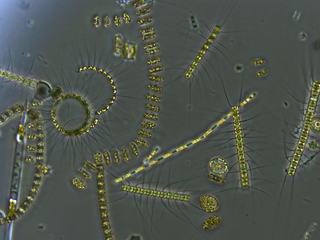
Phytoplankton are the autotrophic (self-feeding) components of the plankton community and a key part of ocean and freshwater ecosystems. The name comes from the Greek words φυτόν, meaning 'plant', and πλαγκτός, meaning 'wanderer' or 'drifter'.

Zooplankton are the heterotrophic component of the planktonic community, having to consume other organisms to thrive. Plankton are aquatic organisms that are unable to swim effectively against currents. Consequently, they drift or are carried along by currents in the ocean, or by currents in seas, lakes or rivers.
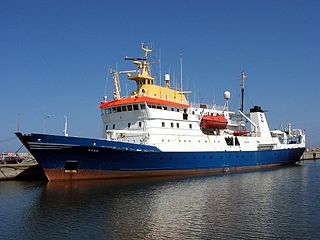
Fisheries science is the academic discipline of managing and understanding fisheries. It is a multidisciplinary science, which draws on the disciplines of limnology, oceanography, freshwater biology, marine biology, meteorology, conservation, ecology, population dynamics, economics, statistics, decision analysis, management, and many others in an attempt to provide an integrated picture of fisheries. In some cases new disciplines have emerged, as in the case of bioeconomics and fisheries law. Because fisheries science is such an all-encompassing field, fisheries scientists often use methods from a broad array of academic disciplines. Over the most recent several decades, there have been declines in fish stocks (populations) in many regions along with increasing concern about the impact of intensive fishing on marine and freshwater biodiversity.

Sir Alister Clavering Hardy was an English marine biologist, an expert on marine ecosystems spanning organisms from zooplankton to whales. He had the artistic skill to illustrate his books with his own drawings, maps, diagrams, and paintings.

In biological oceanography, critical depth is defined as a hypothetical surface mixing depth where phytoplankton growth is precisely matched by losses of phytoplankton biomass within the depth interval. This concept is useful for understanding the initiation of phytoplankton blooms.
The Centre for Environment, Fisheries and Aquaculture Science (Cefas) is an executive agency of the United Kingdom government Department for Environment, Food and Rural Affairs (Defra). It carries out a wide range of research, advisory, consultancy, monitoring and training activities for a large number of customers around the world.

In aquatic biology, the paradox of the plankton describes the situation in which a limited range of resources supports an unexpectedly wide range of plankton species, apparently flouting the competitive exclusion principle, which holds that when two species compete for the same resource, one will be driven to extinction.
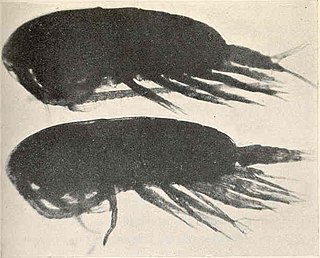
Calanus finmarchicus is a species of copepod and a component of the zooplankton, which is found in enormous amounts in the northern Atlantic Ocean.

The Australian Continuous Plankton Recorder (AusCPR) survey is a joint project of the CSIRO and the Australian Antarctic Division, DEWHA, to monitor plankton communities as a guide to the health of Australia's oceans.

Forage fish, also called prey fish or bait fish, are small pelagic fish that feed on planktons and other small aquatic organisms. They are in turn preyed upon by various predators including larger fish, seabirds and marine mammals, this making them keystone species in their aquatic ecosystems.

Michael John Robert Fasham, FRS was a British oceanographer and ecosystem modeller. He is best known for his pioneering work in the development of open ocean plankton ecosystem models.
The stable ocean hypothesis (SOH) is one of several hypotheses within larval fish ecology that attempt to explain recruitment variability. The SOH is the notion that favorable and somewhat stable physical and biological ocean conditions, such as the flow of currents and food availability, are important to the survival of young fish larvae and their future recruitment. In the presence of stable ocean conditions, concentrations of prey form in stratified ocean layers; more specifically, stable ocean conditions refer to “calm periods in upwelling ecosystems ” that cause the water column to become vertically stratified. The concept is that these strata concentrate both fish larvae and plankton, which results an increase of the fish larvae feeding because of the density-dependent increase in predator-prey interactions. Lasker is attributed with constructing this hypothesis in the late 1970s by building on previous larval fish research and conducting his own experiments. He based the SOH on case studies of clupeid population fluctuations and larval experimentation.

Ichthyoplankton are the eggs and larvae of fish. They are mostly found in the sunlit zone of the water column, less than 200 metres deep, which is sometimes called the epipelagic or photic zone. Ichthyoplankton are planktonic, meaning they cannot swim effectively under their own power, but must drift with the ocean currents. Fish eggs cannot swim at all, and are unambiguously planktonic. Early stage larvae swim poorly, but later stage larvae swim better and cease to be planktonic as they grow into juveniles. Fish larvae are part of the zooplankton that eat smaller plankton, while fish eggs carry their own food supply. Both eggs and larvae are themselves eaten by larger animals.

Raymond (Ray) John Heaphy Beverton CBE FRS was an important founder of fisheries science. He is best known for the book On the Dynamics of Exploited Fish Populations (1957) which he wrote with Sidney Holt. The book is a cornerstone of modern fisheries science and remains much used today. Beverton's life and achievements are described in detail in several obituaries written by prominent figures in fisheries science.
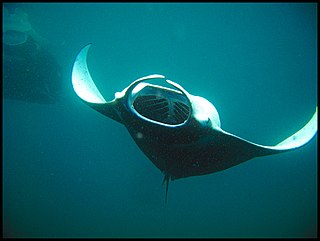
A planktivore is an aquatic organism that feeds on planktonic food, including zooplankton and phytoplankton. Planktivorous organisms encompass a range of some of the planet's smallest to largest multicellular animals in both the present day and in the past billion years; basking sharks and copepods are just two examples of giant and microscopic organisms that feed upon plankton.
John Graham Shepherd CBE FRS is a British Earth system scientist, Emeritus Professor at University of Southampton, and a former director of the National Oceanography Centre, Southampton. He has worked on a wide range of environment-related topics, including the transport of chemical tracers in the atmospheric boundary layer and in the deep ocean, the management of marine fish stocks, and the dynamics of the Earth system. More recently he led a comprehensive review of geoengineering for the Royal Society.

Alan Reece Longhurst was a British-born Canadian oceanographer who invented the Longhurst-Hardy Plankton Recorder, and is widely known for his contributions to the primary scientific literature, together with his numerous monographs, most notably the "Ecological Geography of the Sea". He led an effort that produced the first estimate of global primary production in the oceans using satellite imagery, and also quantified vertical carbon flux through the planktonic ecosystem via the biological pump. In later life he offered several critical reviews of several aspects of fishery management science and climate change science.

The lipid pump sequesters carbon from the ocean's surface to deeper waters via lipids associated with overwintering vertically migratory zooplankton. Lipids are a class of hydrocarbon rich, nitrogen and phosphorus deficient compounds essential for cellular structures. This lipid carbon enters the deep ocean as carbon dioxide produced by respiration of lipid reserves and as organic matter from the mortality of zooplankton.
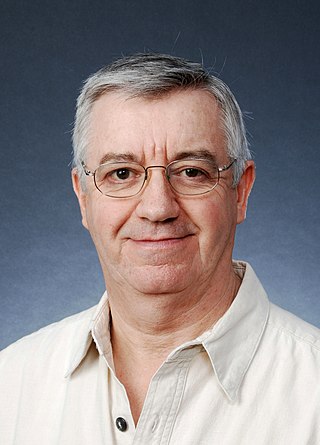
Trevor Charles Platt was a British and Canadian biological oceanographer who was distinguished for his fundamental contributions to quantifying primary production by phytoplankton at various scales of space and time in the ocean.
References
- ↑ Brander, K. M.; Dickson, R. R. (1993). "Papers in appreciation of David Henry Cushing FRS". Fisheries Oceanography. 2 (3–4): 109. doi:10.1111/j.1365-2419.1993.tb00128.x.
- ↑ Shepherd FRS, John; Horwood, Joe (2024). "David Henry Cushing. 14 March 1920 — 14 March 2008". Biographical Memoirs of Fellows of the Royal Society. 77.
- ↑ David Cushing: Sea fisheries ecologist who brought scientific rigour to understanding the inscrutable life cycle of the North Sea herring The Times, 27 March 2008
- ↑ David Cushing: Marine fisheries ecologist The Independent, 11 April 2008
- 1 2 3 4 Harris, R. (2008). "David Cushing, Founding Editor of Journal of Plankton Research". Journal of Plankton Research. 30 (5): 491–494. doi: 10.1093/plankt/fbn053 .
- ↑ Cushing, DH (1973) The detection of fish. Pergamon Press, Oxford, UK.
- ↑ Cushing, DH (1990) Plankton production and year-class strength in fish populations: an update of the match/mismatch hypothesis in Advances in Marine Biology (eds) JHS Blaxter and AJ Southward. Academic Press Limited, San Diego, CA. pgs: 250–313.
- ↑ Cushing, DH (1981) Fisheries biology: a study in population dynamics. The University of Wisconsin Press, Madison, Wisconsin.
- ↑ Cushing, DH (1992) Climate and Fisheries. Academic Press, London, UK.
- ↑ Cushing, DH (1995) Population, production, and regulation in the sea. Cambridge University Press, New York.